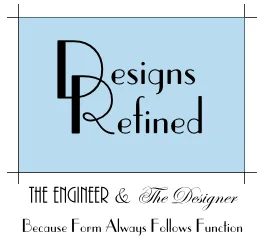A well-organized kitchen can be the key to a happy home. So many kitchens today have built-in desks to pay the household bills, to check on recipes or homework. It all sounds good on paper, but more often than not; the desk becomes a place of clutter. Don’t know what to do with this paper or that photo--put it in the kitchen desk area. These convenient desk areas have replaced the “junk” drawers of days gone by.
The desk areas can be controlled with a few “rules”. The same way you train your children to put toys and school things away, you can train the family to treat the kitchen desk area with respect. With more and more households going for “paperless” bill paying, this clutter situation should improve, but what about all the other detritus that appears on the desktop? Take a careful look at what has collected; it is a bit like an archeological dig of your life.
Begin by clearing the nearest counter or dining space near the kitchen desk as a land spot for all that falls on the desk, and move the trash can within easy reach for tossing what is not wanted. Separate what you need to keep or file; make piles of keepsakes, such as children’s art or photos that you wish to keep close at hand.
Once you have separate piles, you will easily see what actually falls on the desk surface and how you can change a few habits. It is a proven fact that if you provide a specific space for things, people are more inclined to put things where they belong. I love the idea of keeping a shredder in this area; sometimes it is not possible, due to space constraints; but if you have the space, do it! You will find that more than half of the detritus will be gone on a daily basis; providing a trash can of some kind will help achieve the same purpose. Opening mail daily over a trash can eliminates much of the mess with little effort.
Use the walls surrounding the desk as vertical storage for action items and label them for easy identification. Be brutal here: keep only what is necessary, and remember to keep it simple. There are plenty of wall mounted file holders that can be decorative as well as functional. Mark them in a manner that is consistent with your needs; for example: label some with each family member’s name; label others bills to pay, receipts to file/keep for tax returns, school permission slips and the like.
These desk areas are usually surrounded by three vertical walls; use one for the file holders, large or small; they are effective. Next, if you have a pile of children’s art, you might consider putting a bulletin board on one wall and keep magnets or push pins handy for affixing the art. These works of art can be enjoyed for a period of time and replaced by the next creative effort. Decide at the time the new piece comes in, if it deserves to be saved in the “treasure box” you created for each child; if so move it there. This is a box that can be stored under children’s beds; use the long flat type that slides easily.
You may want a blackboard on one of the desk walls, easily achieved with blackboard paint. (See Decorating Tip, Blackboard Walls 11-16-10, edition of the Country Journal). This is a great idea for leaving a quick message or reminder; you also can hang a small blackboard or dry erase board in place of creating a blackboard wall with paint.
These efforts should leave your desk surface clear of papers, so you can sit at the desk to use a lap top computer easily, review a recipe, or write a thank you note to a friend.




